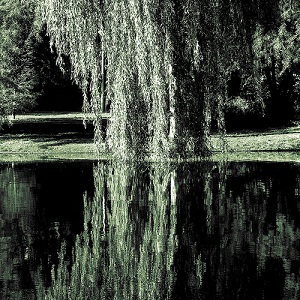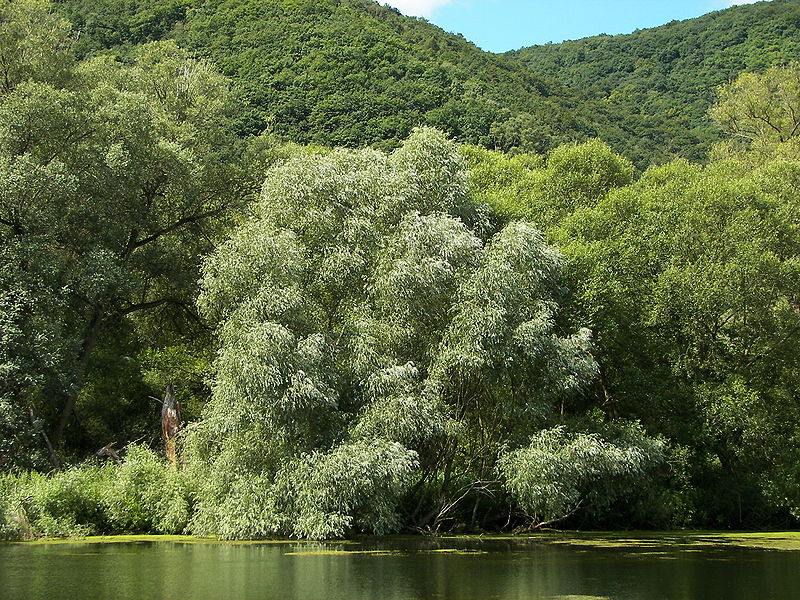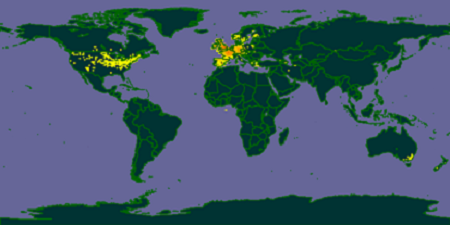A world wide distribution picture that describes that density of Salix alba populations. This picture has been provided by Global Biodiversity Information Facility.

Salix alba can be found along rivers, lakes, or other natural water sources. This is because they need a large amount of water to sustain themselves. Also, they need a large amount of sunlight. The banks of water sources provide a perfect combination of these factors for willow trees. They also have strong capability to adapt to different PH levels in soil. This gives them the ability to survive many different soil types.
However, one of the consequences of living next to water for the willow tree is that it is susceptible to many diseases such as watermark disease this is caused by a bacteria called Brenneria salicis
Today there are even certain strains that have been introduced into Australia that are thriving. This is pretty amazing because these trees prefer moist, slightly humid environments.
Some of the other organisms that also live in this environment include The Common Green Bottle Fly, The Spotted Salamander, and The Barred Owl. The common factor of the organisms is that they all need to be next to water sources to survive, even the owl! These WebPages are a continuation of the multiple organisms webpage project.
Next lets look at the adaptation of Salix alba.

